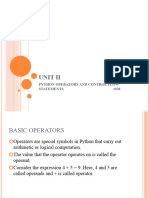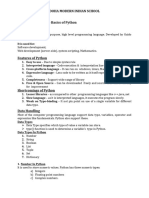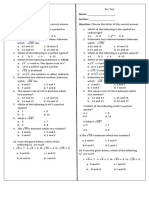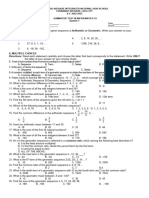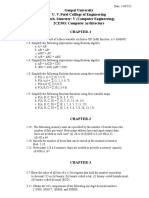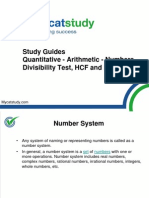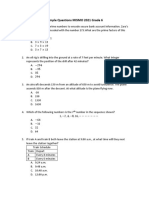0% found this document useful (0 votes)
66 views8 pagesPython Note 1
The document discusses Python programming language. It provides examples of basic Python programs that demonstrate printing strings, using variables and operators, conditional statements like if/else, loops like while loop. It also covers string indexing, slicing and common string methods in Python.
Uploaded by
Zakir HassanCopyright
© © All Rights Reserved
We take content rights seriously. If you suspect this is your content, claim it here.
Available Formats
Download as PDF, TXT or read online on Scribd
0% found this document useful (0 votes)
66 views8 pagesPython Note 1
The document discusses Python programming language. It provides examples of basic Python programs that demonstrate printing strings, using variables and operators, conditional statements like if/else, loops like while loop. It also covers string indexing, slicing and common string methods in Python.
Uploaded by
Zakir HassanCopyright
© © All Rights Reserved
We take content rights seriously. If you suspect this is your content, claim it here.
Available Formats
Download as PDF, TXT or read online on Scribd
/ 8












